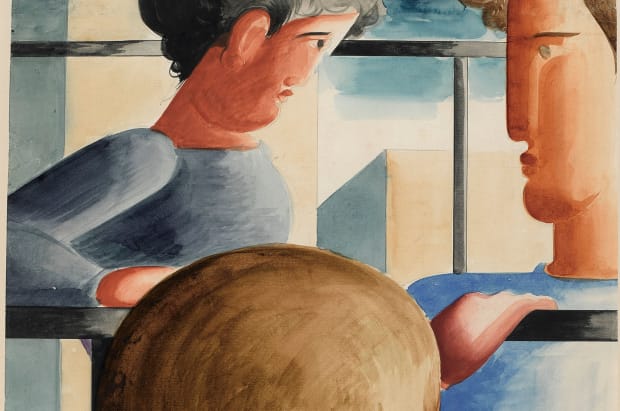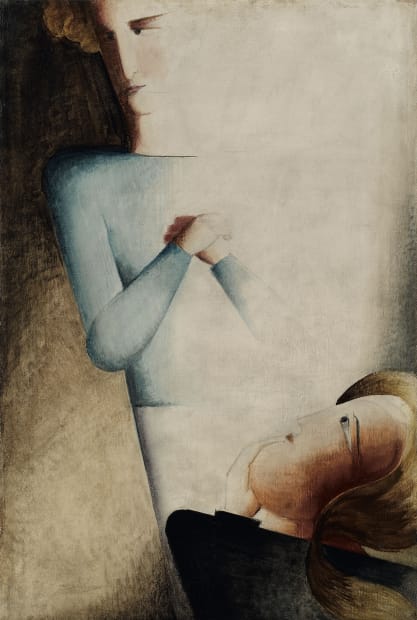

Oskar Schlemmer was born in 1888 in Stuttgart. After a period working as an apprentice in a marquetry workshop, he enrolled at the Stuttgart State Academy of Art and Design in 1912. Under Adolf Hölzel he learnt to abandon the Impressionist style and looked instead to the Cubists for inspiration. In 1919 Schlemmer turned to sculpture as a means of exploring the human form and exhibited at the Galerie Der Sturm in Berlin, before being invited to Weimar to run the sculpture department and stage workshop at the Bauhaus. The 1920s were his most productive years, and his paintings from this period reflect the spatial concerns evident in his theatrical productions. The conservative political climate of the Weimar Republic forced the Bauhaus to move to Dessau in 1925, and Schlemmer directed the experimental Theatre Workshop there until 1929. After leaving the Bauhaus he took a teaching post at the Breslau Academy, where he painted his most celebrated work, the Bauhaustreppe (The Bauhaus Stairway) (1932). He was forced to resign by the Nazis, who considered his art degenerate. Unable to show or sell his work, his painting took on a decidedly mystical tone. He led a secluded life at the end of his career and died in Baden-Baden in 1943.

22 Old Bond Street,
London W1S 4PY,
United Kingdom
Cookies allow us to provide you with useful features and to measure performance in order to improve your experience. By clicking 'Accept all', you agree to the use of all cookies. By clicking 'Manage Cookies', you only agree to the use of selected cookie categories.